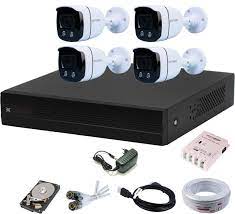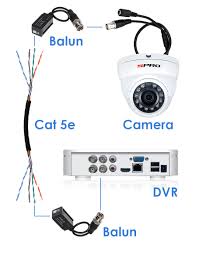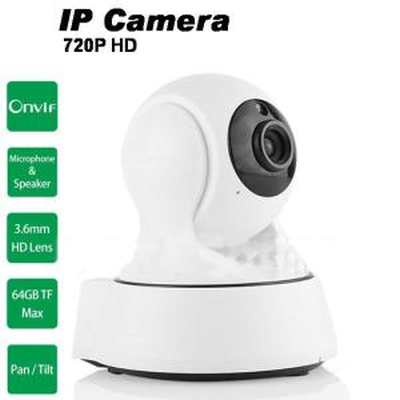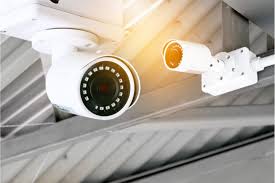DVR Camera: Enhancing Security and Surveillance
In today’s fast-paced world, security and surveillance have become paramount concerns for individuals and businesses alike. The need to protect our homes, offices, and public spaces has led to the development of advanced technologies such as DVR cameras. DVR, short for Digital Video Recorder, is a revolutionary device that has transformed the way we capture, store, and access video footage.
A DVR camera is a sophisticated surveillance system that combines the functionality of a camera with the recording capabilities of a digital video recorder. It offers numerous advantages over traditional analog cameras and VCR systems. Let’s delve into some of the key benefits provided by DVR cameras:
- High-Quality Video: DVR cameras capture high-resolution video footage, ensuring clear and detailed images even in low-light conditions. This enables users to accurately identify people or objects in the recorded footage.
- Remote Viewing: One of the most significant advantages of DVR cameras is their ability to provide remote access to live or recorded video feeds. Users can conveniently monitor their premises from anywhere using smartphones, tablets, or computers with an internet connection. This feature proves invaluable for homeowners or business owners who are frequently away.
- Motion Detection and Alerts: DVR cameras are equipped with intelligent motion detection technology that triggers recording when any movement is detected within their field of view. This helps conserve storage space by only capturing relevant footage and also allows users to receive instant alerts via email or push notifications on their devices.
- Large Storage Capacity: Unlike traditional VCR systems that required physical tapes for recording, DVR cameras store video footage digitally on hard drives or network-attached storage (NAS) devices. This provides significantly larger storage capacities, allowing for extended periods of recording without requiring constant maintenance.
- Easy Search and Playback: Locating specific events within hours or days’ worth of recorded footage can be a daunting task with analog systems. However, DVR cameras offer user-friendly interfaces that enable quick and easy search and playback functions. Users can easily navigate through the recorded footage by date, time, or specific events to find the required information efficiently.
- Scalability and Integration: DVR cameras can be seamlessly integrated into existing security systems, including access control systems, alarms, and sensors. This allows for a comprehensive security solution that can be tailored to specific needs. Additionally, DVR systems are highly scalable, allowing for the addition of more cameras as required without significant infrastructure changes.
- Evidence Collection: In the unfortunate event of a security breach or criminal activity, DVR cameras provide crucial evidence that can aid in investigations and legal proceedings. The recorded footage serves as valuable documentation to support claims or identify perpetrators.
DVR cameras have revolutionized the field of security and surveillance by offering advanced features that enhance safety and peace of mind. Whether it’s securing your home, monitoring your business premises, or safeguarding public spaces, these cameras provide an effective means of deterring potential threats and capturing vital evidence.
As technology continues to evolve, DVR cameras are likely to become even more sophisticated with additional features such as facial recognition, license plate recognition, and advanced analytics. With their continuous innovation and ability to adapt to changing security needs, DVR cameras remain an essential component in ensuring safety in today’s world.
6 Essential Tips for Setting Up and Maintaining Your DVR Camera
- Make sure to read the user manual before setting up your DVR camera.
- Ensure that you have a secure password for your DVR camera in order to protect your recordings from unauthorized access.
- Position the camera in an area with good lighting so that it can capture clear images and videos.
- Regularly check the settings of your DVR camera to ensure that everything is functioning properly and accurately recording footage.
- Back up all of your recordings regularly to avoid losing important data or footage due to technical issues or power outages.
- Test out different angles and positions for your DVR camera in order to get the best coverage of the area you are monitoring
Make sure to read the user manual before setting up your DVR camera.
Setting up a DVR camera can be an exciting and crucial step towards enhancing your security and surveillance. However, before diving into the installation process, it is essential to take a moment to read the user manual provided with your DVR camera. This simple tip can save you time, effort, and potential frustration in the long run.
The user manual serves as a comprehensive guide that familiarizes you with the specific features, functions, and setup instructions of your DVR camera. It provides valuable information on how to properly connect cables, configure settings, and troubleshoot common issues that may arise during installation.
By reading the user manual beforehand, you gain a clear understanding of the steps involved in setting up your DVR camera correctly. This knowledge helps ensure that you maximize its potential and avoid any unnecessary complications or errors. Additionally, it allows you to take full advantage of all the features and capabilities offered by your device.
The user manual also provides essential safety precautions that should be followed during installation. It highlights important guidelines for handling cables, power sources, and other components to prevent accidents or damage to the equipment.
Moreover, familiarizing yourself with the user manual can help you troubleshoot minor issues independently. In case you encounter any challenges during setup or usage, referring back to the manual can often provide quick solutions without needing external assistance.
Remember that each DVR camera model may have unique specifications and requirements. Even if you have experience setting up similar devices in the past, it is still advisable to read the specific user manual for your new DVR camera model. This ensures that you are aware of any updates or changes in functionality that may differ from your previous devices.
In conclusion, taking the time to read the user manual before setting up your DVR camera is a small yet crucial step towards a successful installation process. It equips you with valuable knowledge about your device’s features, setup instructions, safety precautions, and troubleshooting tips. By following this simple tip, you can ensure a smooth and effective setup, allowing you to fully utilize the capabilities of your DVR camera for enhanced security and peace of mind.
Ensure that you have a secure password for your DVR camera in order to protect your recordings from unauthorized access.
Ensuring Security: Protecting Your DVR Camera Recordings with a Strong Password
When it comes to safeguarding your DVR camera recordings, one of the simplest yet crucial steps you can take is setting a secure password. With the increasing prevalence of cyber threats and unauthorized access attempts, having a strong password is essential for maintaining the privacy and integrity of your surveillance footage.
Here are some key reasons why setting a secure password for your DVR camera is of utmost importance:
- Prevent Unauthorized Access: A strong password acts as a barrier against unauthorized individuals attempting to gain access to your DVR camera system. It ensures that only authorized users can view and manage the recorded footage, minimizing the risk of sensitive information falling into the wrong hands.
- Protect Privacy: Your DVR camera recordings may capture sensitive or private moments within your home or business premises. By setting a strong password, you can maintain control over who has access to this footage, protecting the privacy of yourself, your family, or your employees.
- Deter Cyber Attacks: Weak passwords make it easier for hackers to breach your security system and gain unauthorized access to your DVR camera recordings. By using complex passwords that include a combination of uppercase and lowercase letters, numbers, and special characters, you significantly reduce the likelihood of falling victim to cyber attacks.
- Mitigate Data Loss: In case of theft or physical damage to your DVR camera system, having a strong password adds an additional layer of protection against potential data loss. It ensures that even if the hardware is compromised, unauthorized individuals cannot retrieve or tamper with the recorded footage.
To set a secure password for your DVR camera:
a) Use a combination of characters: Create a password that includes a mix of uppercase and lowercase letters, numbers, and special characters. Avoid using easily guessable information such as birthdates or sequential numbers.
b) Length matters: Opt for longer passwords as they are generally more secure than shorter ones. Aim for a minimum of eight characters, but the longer, the better.
c) Avoid common phrases: Stay away from commonly used phrases or easily guessable patterns. Hackers often employ automated tools that can quickly crack passwords based on common word combinations.
d) Regularly update your password: It’s good practice to change your DVR camera password periodically, ideally every three to six months. Regularly updating your password reduces the risk of it being compromised over time.
By following these simple guidelines and implementing a strong password for your DVR camera, you enhance the security of your surveillance system and protect your valuable recordings from unauthorized access. Remember, taking proactive measures to secure your system is an essential step in maintaining the privacy and integrity of your surveillance footage.
Position the camera in an area with good lighting so that it can capture clear images and videos.
Positioning Your DVR Camera for Clear Images and Videos
When it comes to maximizing the effectiveness of your DVR camera, one crucial factor to consider is its positioning. By strategically placing your camera in an area with good lighting, you can ensure that it captures clear images and videos, providing you with valuable surveillance footage. Here’s why this tip is essential:
- Enhanced Visibility: Adequate lighting plays a significant role in capturing clear images and videos. When the camera is positioned in an area with good lighting, it can effectively capture details such as facial features or license plate numbers, making it easier to identify individuals or objects in the footage.
- Minimized Distortion: Insufficient lighting can result in grainy or blurry footage, making it challenging to discern critical details. By placing the camera in a well-lit area, you minimize the chances of distortion and ensure that the recorded videos are sharp and crisp.
- Improved Coverage: Proper lighting not only enhances image clarity but also expands the coverage area of your DVR camera. Well-lit spaces allow for wider surveillance coverage, ensuring that no important angles or blind spots are left unmonitored.
- Deterrence Factor: Brightly lit areas act as a deterrent for potential intruders or criminals. When your DVR camera is positioned in a well-lit location, it sends a clear message that the premises are under surveillance and discourages any illegal activities from taking place.
To optimize your DVR camera’s performance through proper positioning:
a) Assess Lighting Conditions: Before installing your camera, evaluate the lighting conditions of the intended area. Ensure that there is sufficient natural or artificial light available during day and night time.
b) Avoid Direct Light Sources: While good lighting is essential, make sure to position your camera away from direct light sources such as bright windows or intense spotlights. Direct light can cause glare or washout in the footage, affecting its quality.
c) Test and Adjust: Once installed, test the camera’s view and adjust its position if needed. Aim for a balanced lighting setup that provides clear visibility without excessive shadows or overexposure.
d) Consider Additional Lighting: If the area lacks adequate lighting, consider installing additional lighting fixtures such as floodlights or infrared illuminators. These can significantly improve visibility during nighttime or low-light conditions.
Remember, the goal is to capture clear and detailed footage that can be used for identification, evidence collection, or monitoring purposes. By positioning your DVR camera in an area with good lighting, you ensure that it functions optimally and provides you with the necessary surveillance coverage you need.
Regularly check the settings of your DVR camera to ensure that everything is functioning properly and accurately recording footage.
Regularly Checking Your DVR Camera Settings: Ensuring Accurate and Reliable Footage
When it comes to security and surveillance, having a DVR camera is an excellent investment. It provides peace of mind by capturing and storing video footage of your surroundings. However, simply installing a DVR camera is not enough. To ensure that it functions properly and accurately records footage, it is crucial to regularly check its settings.
Regularly reviewing the settings of your DVR camera ensures that it is optimized for maximum performance. Here are some important aspects to consider when checking your camera’s settings:
- Time and Date: The accuracy of time and date settings is essential for organizing recorded footage effectively. Double-check that the time zone, date, and time are correctly set on your DVR camera. This ensures that the recorded events are accurately timestamped, making it easier to locate specific incidents when reviewing the footage.
- Recording Quality: Take a moment to review the recording quality settings on your DVR camera. Adjusting the resolution and frame rate can significantly impact the clarity and smoothness of the recorded video. Depending on your needs, you may want to prioritize higher resolution or longer recording durations by finding the right balance for your specific requirements.
- Motion Detection Sensitivity: Most modern DVR cameras come equipped with motion detection capabilities. Adjusting the sensitivity level ensures that the camera captures relevant events while minimizing false alarms triggered by insignificant movements (such as passing vehicles or tree branches). Fine-tuning this setting helps optimize storage space utilization and reduces unnecessary recordings.
- Storage Management: Check if your DVR camera has sufficient storage capacity or if additional storage devices need to be added or replaced. It’s essential to ensure that there is enough space available for continuous recording without interruption.
- Network Connectivity: If you have enabled remote access to monitor your DVR camera feeds over the internet, verify that network connectivity is stable and functioning correctly. Ensure that port forwarding or any required network configurations are properly set up to allow remote access without any issues.
- Firmware Updates: Regularly check for firmware updates provided by the manufacturer. Firmware updates often include bug fixes, performance enhancements, and new features that can improve the overall functionality of your DVR camera. Keeping your device up to date ensures that you benefit from the latest advancements in security technology.
By regularly checking and adjusting your DVR camera settings, you ensure that it operates optimally, capturing accurate and reliable footage. This proactive approach helps maintain the effectiveness of your security system while minimizing any potential issues or gaps in surveillance coverage.
Remember, each DVR camera may have slightly different settings and configurations. Refer to the user manual or manufacturer’s guidelines for specific instructions on how to access and adjust these settings for your particular device.
Investing a little time in periodically reviewing and fine-tuning your DVR camera’s settings can go a long way in maximizing its performance and ensuring that you have accurate recordings when you need them most.
Back up all of your recordings regularly to avoid losing important data or footage due to technical issues or power outages.
Backing Up Your DVR Camera Recordings: Ensuring Data Security
In the realm of security and surveillance, DVR cameras play a vital role in capturing and storing video footage. These devices provide valuable evidence and help ensure the safety of homes, businesses, and public spaces. However, it is essential to recognize the importance of regularly backing up your DVR camera recordings to prevent any potential loss of critical data or footage due to technical issues or power outages.
By backing up your recordings, you create an additional layer of protection for your valuable footage. Here are a few reasons why regular backups are crucial:
- Mitigating Data Loss: Technical glitches or power outages can occur unexpectedly, causing data loss or corruption on your DVR camera’s storage device. By regularly backing up your recordings, you minimize the risk of losing important data in such situations.
- Preserving Evidence: In the unfortunate event of a security breach or criminal activity, the recorded footage becomes invaluable evidence. By backing up your recordings, you ensure that this evidence is securely stored and readily accessible when needed for investigations or legal proceedings.
- Reducing Downtime: If your DVR camera experiences a malfunction or requires maintenance, having backup recordings allows you to continue monitoring your premises without interruptions. This helps maintain consistent security coverage while addressing any technical issues with the primary system.
- Long-Term Storage: DVR cameras have limited storage capacities that may fill up over time with continuous recording. By regularly backing up your recordings to external storage devices or cloud-based platforms, you can free up space on the DVR camera’s internal storage and extend its operational lifespan.
To effectively back up your DVR camera recordings:
a) External Storage Devices: Connect external hard drives or USB flash drives to your DVR system and schedule automatic backups at regular intervals. Ensure that these devices are stored securely in a separate location to safeguard against theft or damage.
b) Network Attached Storage (NAS): Utilize a NAS device connected to your local network to store and access your DVR camera recordings. This allows for centralized storage and easy scalability as your storage needs grow.
c) Cloud-Based Solutions: Explore cloud storage services that offer secure and reliable backup options for your DVR camera recordings. These services provide the advantage of remote access to your backups from anywhere with an internet connection, ensuring data availability even in the event of physical damage or theft.
Remember, it is crucial to test the integrity of your backups periodically to ensure that they are complete and accessible when needed. Additionally, consider implementing a data retention policy that aligns with your specific security requirements and regulatory obligations.
By following these practices and making regular backups a part of your security routine, you can safeguard your DVR camera recordings against unforeseen circumstances and ensure the preservation of critical data and footage. Prioritizing data security through regular backups empowers you with peace of mind, knowing that you have taken proactive steps to protect your valuable surveillance assets.
Test out different angles and positions for your DVR camera in order to get the best coverage of the area you are monitoring
When it comes to setting up your DVR camera for optimal surveillance, one important tip is to test out different angles and positions. This allows you to find the best coverage of the area you are monitoring.
Every location is unique, and the ideal camera placement may vary depending on factors such as the size and layout of the space, potential blind spots, and specific security concerns. By experimenting with different angles and positions, you can ensure that your DVR camera captures the most critical areas and provides comprehensive coverage.
Start by surveying the area and identifying potential entry points or vulnerable spots that require close monitoring. Consider both indoor and outdoor areas, as well as any specific objects or assets that need protection. Then, position your DVR camera accordingly.
During this testing phase, try out various heights, angles, and directions to find the optimal setup. You may need to mount the camera on walls or ceilings or use adjustable brackets to achieve the desired angle. Keep in mind that a higher vantage point can provide a broader view but may sacrifice some detail, while a lower position can capture more specific details but cover a smaller area.
It’s also essential to consider lighting conditions when positioning your DVR camera. Avoid placing it directly facing bright light sources like windows or strong artificial lights as this can cause glare or washout in the footage. Instead, aim for a balance between natural and artificial lighting to ensure clear visibility.
Once you have found an angle or position that seems suitable, test it by simulating different scenarios. Walk through the monitored area from various entry points to see if any blind spots exist or if there are any obstructions blocking the camera’s view.
Remember that surveillance needs may change over time due to renovations, rearrangements of furniture or equipment, or new security concerns. Therefore, periodically reassessing your DVR camera’s positioning is recommended to maintain effective coverage.
By investing time in testing out different angles and positions for your DVR camera, you can ensure that it provides the best possible coverage of the area you are monitoring. This proactive approach to surveillance helps maximize security and provides peace of mind, knowing that your premises are well-protected.




